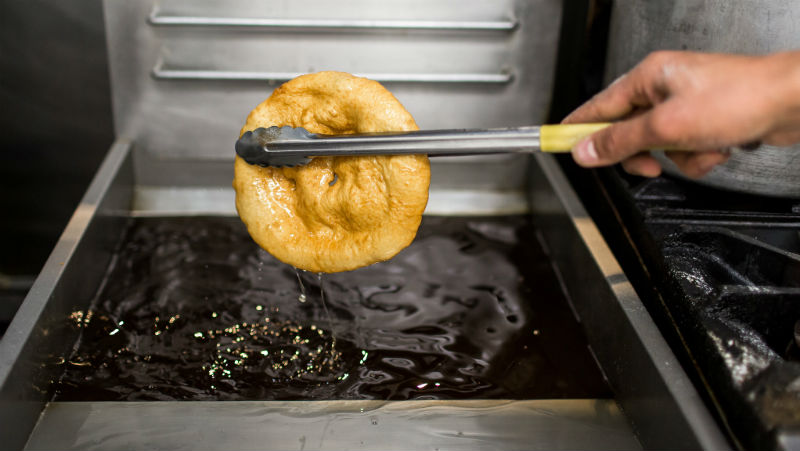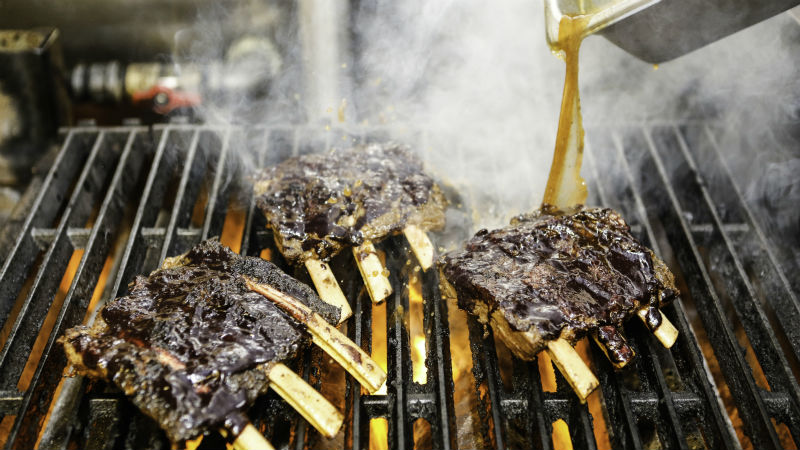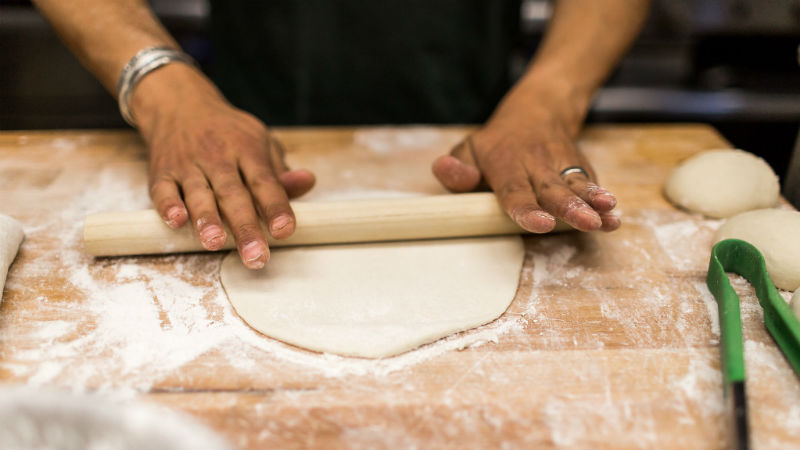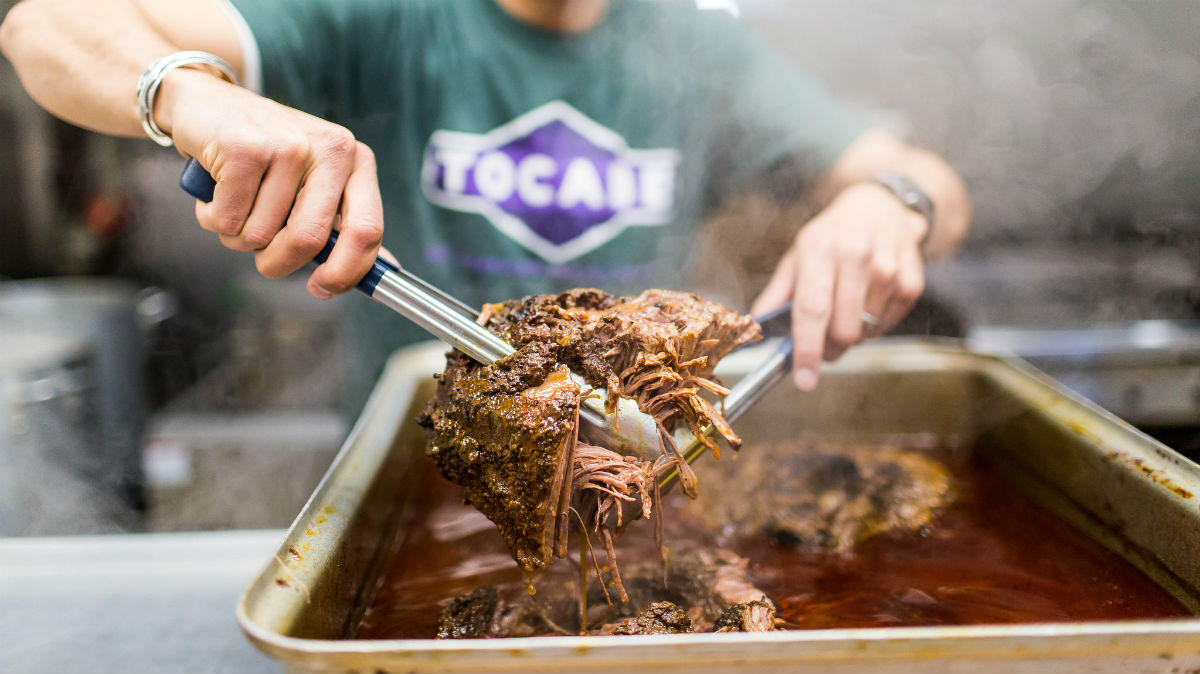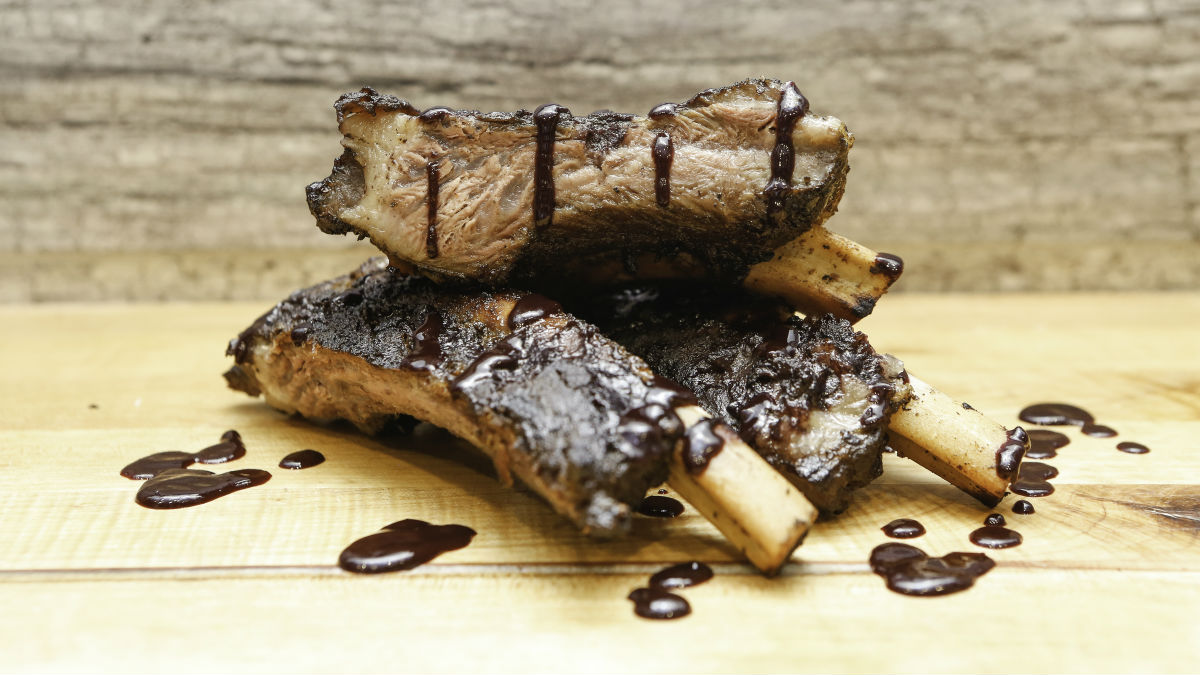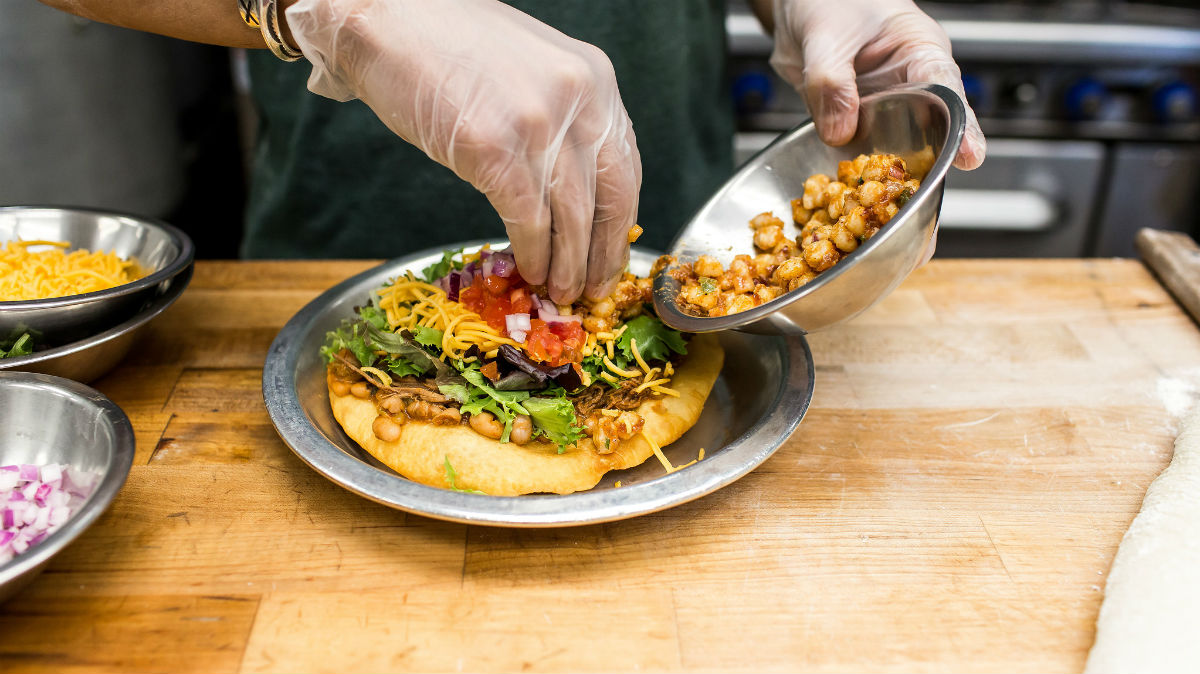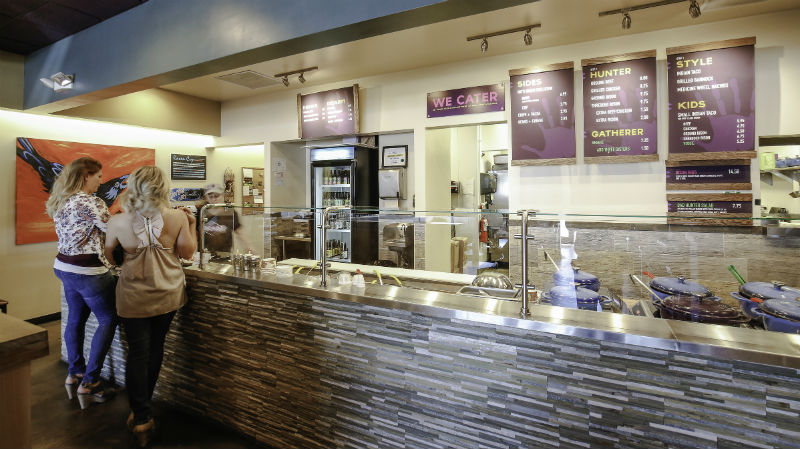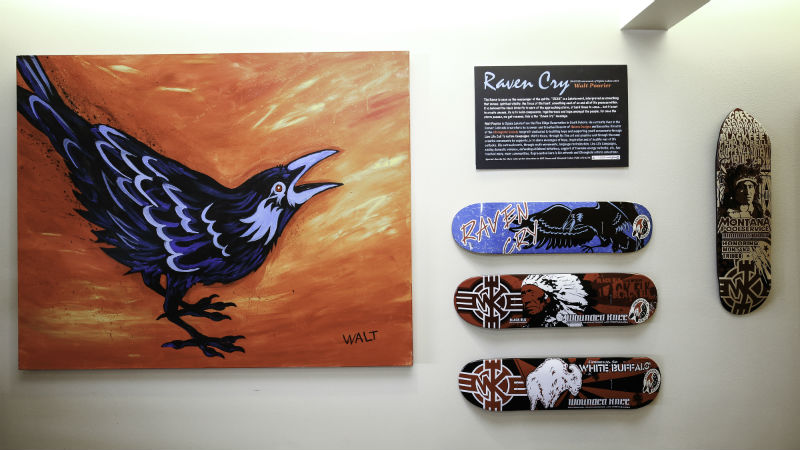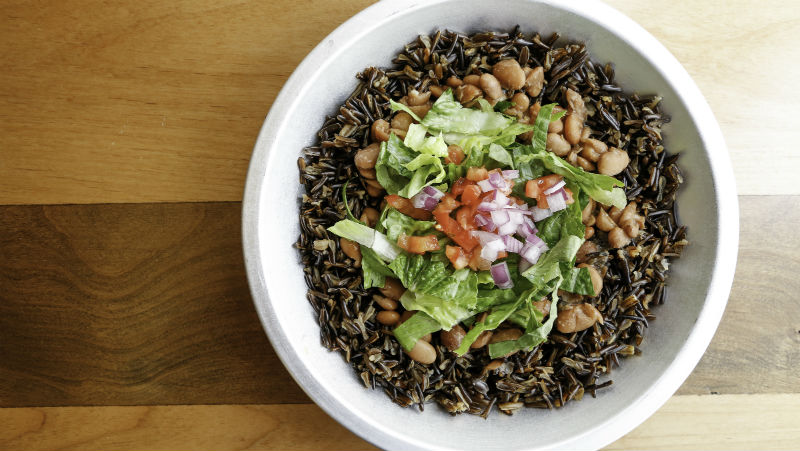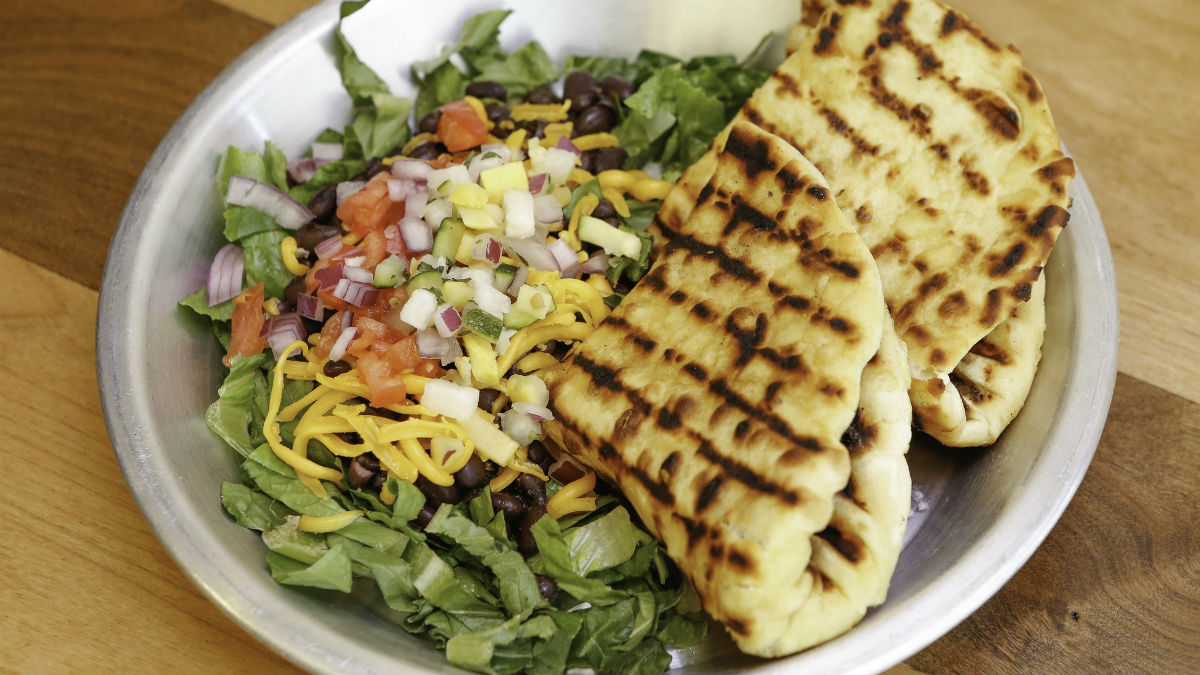One of the most exciting food trends can be found in Denver, Colorado. Tocabe, an American Indian restaurant, is on the cutting edge of the Indigenous food movement, offering up scrumptious dishes steeped in tradition and history but made with forward-thinking choices and Native, ethically-sourced ingredients.
It began in 1989 when Ben Jacobs’ family, members of the Osage Nation, opened Grayhorse: An American Indian Eatery in downtown Denver, using their collection of family recipes. In 2008, Ben Jacobs opened Tocabe with his friend Matt Chandra, expanding upon those family recipes and providing a nourishing, welcoming place where all people can dive into the flavors, values, and creativity of American Indians.
We were eager to catch up with Ben Jacobs to learn more. He even shared a favorite Tocabe recipe: Green Chile Stew.
Tell us a bit about you. How did you end up in the restaurant world?
Matt [Chandra] and I both worked in restaurants through college, working pretty much all positions from dishwashing to bussing to serving and bar backing. You name it and we probably did it. After college, we discussed going into business together but did not actually know what we wanted to do. While Matt visited Oklahoma with my family for our annual ceremonial dance, the conversation of Native food arose. We discussed with my father the restaurant my parents had started in 1989 called Grayhorse: An American Indian Eatery. After the discussion of foods and my parents’ restaurant, we decided to attempt to recreate, and add to, the beginning steps of what my parents had done. Now, 11 years later, here we are with nine years of business under our belts.
How would you define American Indian cuisine?
In my opinion, there is no current definition. There are over 500 tribal nations in the U.S. alone, all with distinctly different regions, traditions, and values. Now, of course, there are commonalities between these communities, but each tribe is unique. So, as for what our food is, it is a work in process — learning from our past and evolving for our future. We feel very strongly about supporting the Native community by sourcing our food from Native purveyors whenever possible. I like to say no one in this Native or Indigenous food movement is doing it wrong as long as it comes from your heart, pushes for progression and positively supports your people and community.
How does regionalism play into American Indian food? Do recipes and culinary traditions in the Osage Nation, for example, differ greatly from other regions of the country like the Pacific Northwest or the Southeast? Are there differences even within the same region, like we see with Southern cooking?
The short answer is yes (see above), although I can give an example. We traveled to the Houma Nation of Louisiana and spend time learning their approach to food. We went fishing on the bayou and smoked the fish on pear wood for a feast. They taught us the real way to use sassafras — what is now file powder — while making the true original of what we know of as gumbo. Now, crossing the border into Canada with First Nations people, our friend’s mother taught Matt and I how she makes moose meat stew. Now travel to the Northwest and have traditional three-day-smoked salmon or the Northeast where you can find the origins of clam chowder. At the same time you can travel the plains and eat bison with wild onions. Of course, this barely touches the surface, but the point is the variation is vast and beautiful.
What are some iconic dishes, spices, and/or ingredients of American Indian cuisine? Are there any foods we might be surprised to learn are American Indian?
As simple as it is to say, I think many people do not realize most varieties of squash they buy in the store have Indigenous origins — or beans, for the matter. As for spices, we enjoy using a variety of sage whether fresh or dried, sumac, and dried chilies, to name a few. A few years ago, we introduced our Posu (meaning wild grass in Osage) Wild Rice Bowls, which have become really popular.
A lot of the restaurant’s dishes are family recipes. Could you tell us more about this legacy?
We began our approach with my grandmother’s fry bread and corn soup recipes, as well as a few
Food is often a great way to immerse yourself into a different culture; it can tell us so much about traditions, values, tastes. Do you find Tocabe is helping to bring greater awareness to the Osage Nation, its history, and people?
From an Osage perspective, we incorporate ideas and imagery that represent our tribe. Tocabe is an old word which is no longer used for the color blue. The three hands from our logo represent the three villages of the Osage: Pawhuska, Hominy, and Grayhorse. We have incorporated Osage ribbon work patterns into our design and branding. All of these are subtle, and that is the point. We want people to question why we do what we do. We want to create conversation. Along with this we attempt to keep the conversation open to people of all tribal backgrounds.
Denver was one of several relocation cities in the U.S. where Native people were moved into urban settings and away from their tribal communities. Because of that, there is a large Native population here, and we wanted our restaurant to be a space for us all to share our our identity and who we are as Native peoples. Our restaurant is designed to be a community driven experience with many voices included. The wonderful result is that we are a place where both people in the Native community and people who are not feel at home and comfortable.
Do you see a growing interest in American Indian cuisine? Are you seeing other people and Nations following your lead in the restaurant world?
I believe professional Native food is only in its beginning phases. Do not get me wrong, there have been many women and men cooking Native foods professionally for 30 or more years and they definitely deserve our respect in helping to build this platform. The reason I think it is still young and growing is that we are now seeing the general population is more interested in what we eat, where it comes from, and the meanings behind it. It is not that Native food did not exist, but rather there has not yet been attention for it on this scale, nor has there been mass adoption of the food.
Also, I think young Native people can now see if they are interested in food, cooking, and the restaurant industry, you do not have to follow what you are taught in culinary, trade, or business school. Learn the business, learn the techniques, learn the approach, then break the mold and create your own.
Tell us a bit about your views on sustainability, sourcing indigenous ingredients, and the Native farms you work with.
We are continually trying to better our sourcing and approach. We source food from Native food producers when available. We like to say when most restaurants go local first, we go Native first, local second. Many of our Native-produced items come to us dried or shelf-stable — for instance, maple syrup. Our bison comes from a local rancher who actually delivers it himself to both our shops. It’s actually pretty cool — after he drops off the bison, he takes our used cooking oil and converts it for his bio diesel delivery van. Our turkey is sourced locally and fully organic, as well as local, all-natural chicken.
Beyond food, we stopped using in-house paper products this year and moved to real plates and silverware to cut down on waste. Also, as for food scraps, currently only in our original location, we save all produce scraps, which we donate to a local Native organization, Four Winds, for composting in their gardening program.
Do you have a favorite American Indian recipe you’d be willing to share?
Yes! [Below is] our Green Chile Stew for your readers — great for the winter!<
Tocabe’s Green Chile Stew
(Serves 4-6)
Ingredients:
- 1 large potato
- 8 oz fresh ground beef
- 4 cups cold water
- 1 1/2 cups corn (prefer cut off cob, but can substitute frozen or canned)
- 3/4 cup mild green chili (prefer fresh, but can substitute with frozen or canned)
- 1/2 cup hot green chili (prefer fresh, but can substitute with frozen or canned)
- 1/3 cup flour (might need more depending on how much grease is in the meat)
- Kosher salt and freshly ground black pepper to taste
- 2 tsp green chili powder (optional)
- Grated cheese (optional)
- Sour cream (optional)
Method:
- Peel and cube the potato into half-inch diameter pieces and set aside.
- In a saute pan on medium heat, cook the ground beef and lightly sprinkle with salt and pepper. Break into serving sized pieces (whatever size you want).
- Cook the green chili powder, if you are using, into the beef.
- While the beef is cooking, place 4 cups water in a stock pot with the potatoes and bring to a boil. Cook the potatoes until fork tender; do not cook until the potatoes mash.
- When all the rawness is cooked out of the beef, turn off the heat. Slowly add the flour while mixing into the beef in order to make a roux. Mix the flour into the beef completely until no dry flour remains.
- Once your roux is complete, add to the stockpot with the cooked potatoes. Add the green chiles, corn, 2 tsp salt, and 2 tsp black pepper. Fully mix all the ingredients and place the stockpot back on the stove top.
- Bring up to temperature on medium heat, stirring occasionally. This may take up to 30 minutes or more. Feel free to add cheese or sour cream, if desired.

